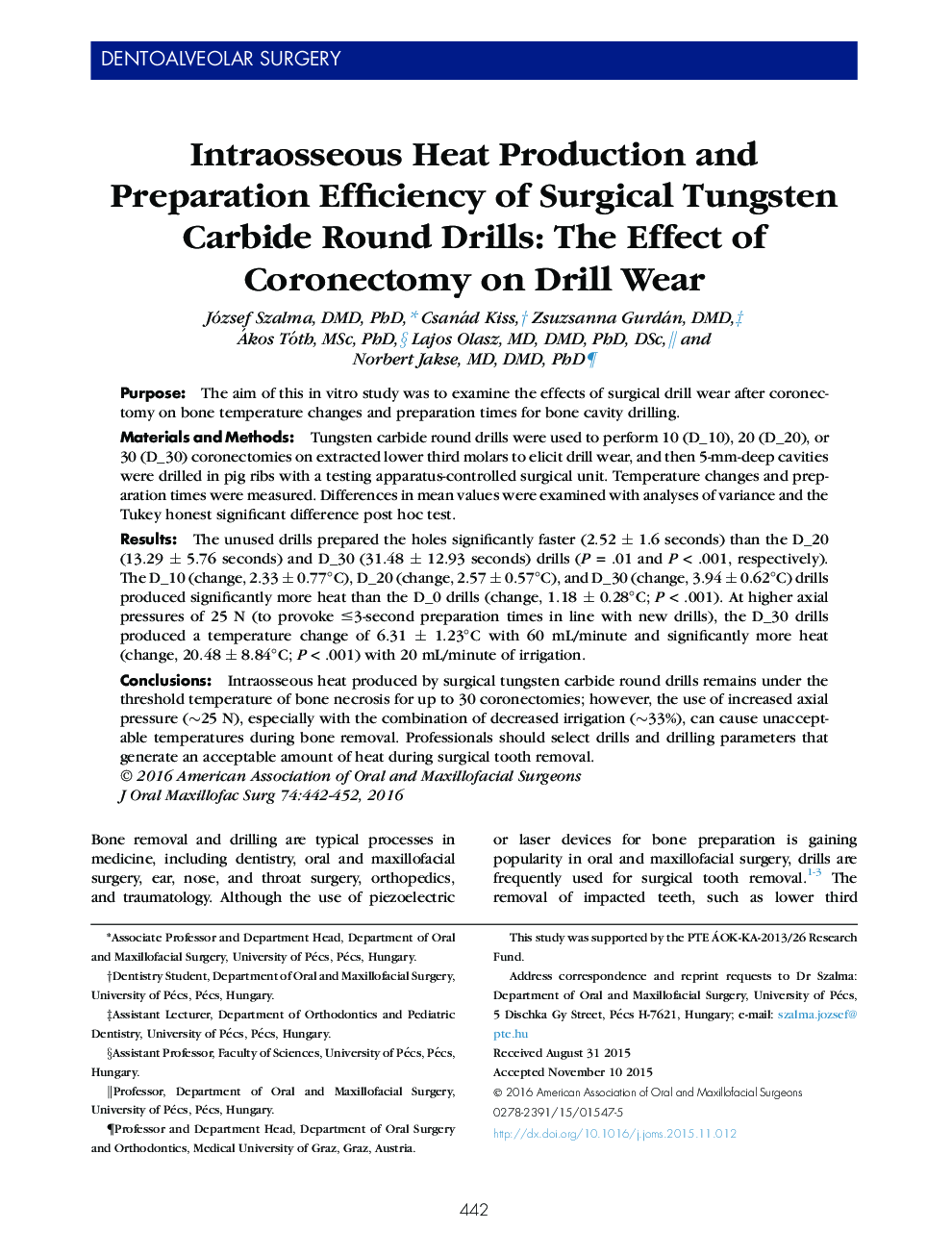| کد مقاله | کد نشریه | سال انتشار | مقاله انگلیسی | نسخه تمام متن |
|---|---|---|---|---|
| 3157636 | 1198194 | 2016 | 11 صفحه PDF | دانلود رایگان |
PurposeThe aim of this in vitro study was to examine the effects of surgical drill wear after coronectomy on bone temperature changes and preparation times for bone cavity drilling.Materials and MethodsTungsten carbide round drills were used to perform 10 (D_10), 20 (D_20), or 30 (D_30) coronectomies on extracted lower third molars to elicit drill wear, and then 5-mm-deep cavities were drilled in pig ribs with a testing apparatus-controlled surgical unit. Temperature changes and preparation times were measured. Differences in mean values were examined with analyses of variance and the Tukey honest significant difference post hoc test.ResultsThe unused drills prepared the holes significantly faster (2.52 ± 1.6 seconds) than the D_20 (13.29 ± 5.76 seconds) and D_30 (31.48 ± 12.93 seconds) drills (P = .01 and P < .001, respectively). The D_10 (change, 2.33 ± 0.77°C), D_20 (change, 2.57 ± 0.57°C), and D_30 (change, 3.94 ± 0.62°C) drills produced significantly more heat than the D_0 drills (change, 1.18 ± 0.28°C; P < .001). At higher axial pressures of 25 N (to provoke ≤3-second preparation times in line with new drills), the D_30 drills produced a temperature change of 6.31 ± 1.23°C with 60 mL/minute and significantly more heat (change, 20.48 ± 8.84°C; P < .001) with 20 mL/minute of irrigation.ConclusionsIntraosseous heat produced by surgical tungsten carbide round drills remains under the threshold temperature of bone necrosis for up to 30 coronectomies; however, the use of increased axial pressure (∼25 N), especially with the combination of decreased irrigation (∼33%), can cause unacceptable temperatures during bone removal. Professionals should select drills and drilling parameters that generate an acceptable amount of heat during surgical tooth removal.
Journal: Journal of Oral and Maxillofacial Surgery - Volume 74, Issue 3, March 2016, Pages 442–452
